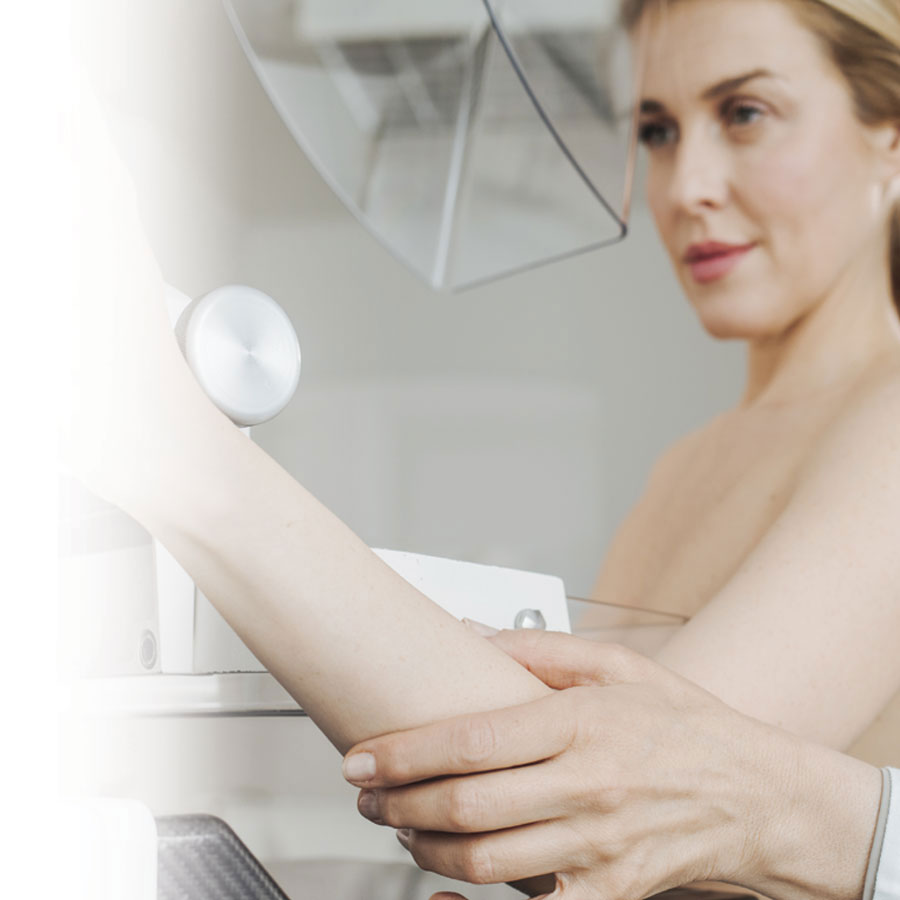Breast cancer is the most common form of cancer among Canadian women. Would you know how to detect it early if you were affected by it?
Tumour or cancer?
The human body consists of billions of cells that, in a normal situation, are produced and then die based on an ongoing process that happens in an organized fashion. This process sometimes unfolds inappropriately in one area of the body, leading to the growth or a lump called a tumour. Tumours can be benign (non-cancerous) or malignant (cancerous).
Breast cancer is the result of the proliferation of these types of cells within the breast. It may be more or less advanced or extensive. Sometimes, it travels to other organs or tissue; this is called metastases.
Fortunately, breast cancer can often be cured with treatments such as surgery, hormone therapy, radiation therapy, chemotherapy or targeted therapies.
The risk factors
Certain factors increase the risk of developing breast cancer. Some are not modifiable, such as those related to heredity. Other factors, such as alcohol consumption, obesity, inactivity, smoking and taking oral contraception or hormone replacement therapy, can be modified.
Speak to a healthcare professional about how to minimize your risks of developing breast cancer.
Symptoms to assess
In order to detect the presence of breast cancer early, watch out for the following signs and symptoms:
- pain or tenderness in the breast
- a lump or bump detectable to the touch
- retraction of the skin on the breast or nipple
- nipple discharge
- redness, swelling or warmth in or on the breast
- change in the size or shape of the breast
- swollen lymph nodes under the armpits
It is important to note that the disease may still be present without any of these signs or symptoms.
Ways to screen and detect
Measures such as breast awareness, clinical examination and mammograms can help to detect the presence of cancer early and therefore treat it without delay.
Breast awareness
In order to detect any abnormality, it is advisable to learn how your breasts usually feel. To do this, there is no specific technique to be used by all. Breast awareness and regular examination will allow you to familiarize yourself with their characteristics and to detect any possible changes.
Of course, it is normal for breasts to change over the course of a woman’s lifetime, but certain signs can indicate that something is wrong.
Here are a few tips:
- Observe your breasts regularly. Doing so in front of a mirror may be helpful.
- Palpate your breasts whenever you have the time; frequency is not very important, as long as you do it periodically.
- Ask your partner to let you know about any changes or unusual signs.
- If there is a change or an unusual sign, see your doctor promptly.
All women should learn about breast awareness whatever their age, health or lifestyle.
Clinical breast examination
It is advisable to see a healthcare professional, such as your doctor, gynecologist or qualified nurse at least every two years. During such a visit, a healthcare professional can perform a clinical breast examination. This consists of a visual and in-depth tactile exam which allows them to check for the presence of abnormalities. Be sure to speak to your health professional about any recent changes in your health (including breast health).
A mammogram
A mammogram is the best way to screen for breast cancer. It consists of an x-ray examination of the breasts that can detect small lesions that may not be detectable to the touch. It is recommended that the following people have a mammogram:
- women between the ages of 50 and 74 (every two years)
- younger women who have a higher risk of breast cancer, and
- women of any age who have had abnormalities that may suggest the presence of breast cancer
Women aged 75 years or older should speak to their doctor about screening.
Early detection of breast cancer can help you take control of your health and reduce the impact of the disease on your life. Being vigilant is certainly the best strategy!
Healthcare professionals can provide additional information about what can increase your risk of developing breast cancer. Don’t hesitate to speak with them, as they can provide advice on how to decrease the risk.
Speak to your pharmacist for additional information about breast cancer.

